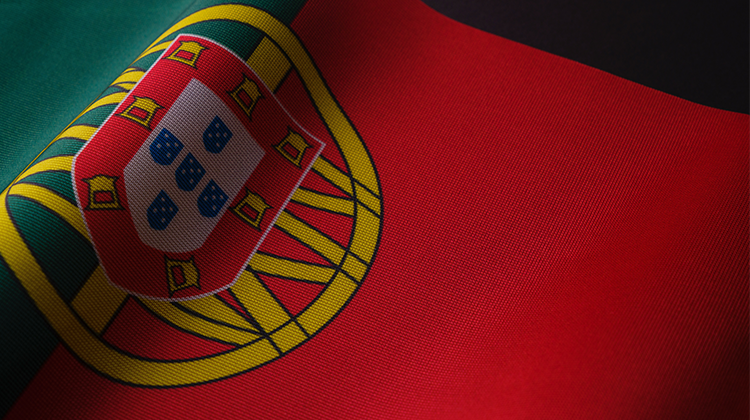Most of you probably don't even know where Portugal is on the map. Well, Portugal has shared half the world with its neighbor Spain and is one of the oldest nations in the world, but what is so special about it and what characterizes it?! This article will show you some points!
1.Festivals and “Romarias”
Portugal is a country that loves parties, but also its traditions and as such we have lots of festivals and "romatias” and each land or region has its own! Most of them are connected to the Christian religion, like the Festa de Nossa Senhora dos Remédios (Lamego), the Festa do Senhor Santo Cristo dos Milagres (Azores), or even the popular saints.
But there are also festivals that have distanced themselves from religion and have acquired more varied objectives, such as the Flower Festival (Madeira) a beautiful and unique festival in the country, or the Festas a Feira de São Mateus (Viseu). You should try it!
2. Traditional dances!
Almost all nations if not many have typical dances or love to dance. Portugal is no exception. Most of our dances have the accordion (very present in Portuguese culture) as a common instrument (with the Pauliteiros de Miranda being an exception, it's very interesting because they use the instrument while they dance!)
Another thing that characterizes our dances are the typical clothes, just like in the Swiss Alps, in Portugal we also have typical clothes. One of the interesting things to say about typical clothes is that they change according to the region. About dances traditional dances we can name Bailarico Saloio and Vira do Minho, but there are many others.
3. Wine!
Wine lovers are you there? Who has already tasted Portuguese wine?
We have been producing wine for over 2000 years and in my opinion we can thank the Romans for that! We are also a country with a huge variety of grape varieties, and nowhere else in Europe can you find so many varieties that originate great wines.
We also have the oldest Demarcated Region in the world, the Douro, which guarantees the quality of Port Wine (produced on the terraces of the Douro, in the Peso da Régua area).
4. Gastronomy
Those who have already had the opportunity to travel to Portugal know well how varied our gastronomy is and as if that wasn't enough each region has its own typical dishes with ingredients from each region. We can possibly divide it between the Mediterranean zone and the Atlantic zone, besides that because of the time of the discoveries we also have some oriental influences.
Do you know that the most famous product is codfish? What if I told you that it is not even found on our coasts and is caught over a thousand kilometers away from the country? It is true, but we still love it, at least the majority of the Portuguese. Portuguese gastronomy is not only cod but also other types of fish and meat, vegetables, and various grains. Mnhami, what are you going to eat?
5. Conventual Sweets
Get in shape? Go on a diet? Let's move on from gastronomy to sweets!
There's no doubt that one of the most famous typical Portuguese sweets is “pastel de Belém” (or pastel de nata, its imitation). But we are a country with a great variety of sweets, we can eat a different cake a day for a lot of days! You could say that practically any village or city has its own typical sweet, surprising I know. Just think of things like pastel de Tentúgal, pastel de Vouzela, queijadas and travesseiros from Sintra, clarinhas from Esposende, pão de ló from Ovar or ovos moles from Aveiro.
Now it's time to be amazed and learn how it all began!
A large part of this variety of sweets is due to the old nunneries, which had the ingredients, time, and creativity to create different recipes. They also had a large number of egg yolks (the whites were used to take care of the linen), so they needed to put this ingredient to some use, which led to the creation of several different sweets.
6. Azulejos
The development of Azulejos was stimulated at the end of the 15th century and the beginning of the 16th century when Portuguese art was influenced by Muslim ornamental decoration. Tiles were then ordered from the Moorish ceramics of Seville, which were used on the most diverse surfaces.
In the second half of the 16th century, tiles also arrived in our country from Flemish workshops, in addition to the Spanish workshops, and through the influence of these centers, we learned the method of manufacturing and painting faience.
From the East came the sense of brilliance, exuberance, and ornamental motifs, and from China came the blue of porcelain, which stripped the tiles of their repetitive character and filled them with dynamism and movement. Over time, we refined this art, which today is one of our national symbols.
We can say that art so characteristic of our people had influences in other countries.
7. Literatura
We are known as a country of poets, whose tradition began at the same time as the nation, thanks to troubadour poetry. We rose to the top of the epic with Luís de Camões' Lusíadas, which tells the story of the Portuguese discoveries.
We cannot forget to name our great poet Fernando Pessoa, a great genius who even had heteronyms. In the 20th century, the work of the most widely translated Portuguese poet was from him!
Although I'm not a fan and people say either you love it or you hate him we have Jose Saramago! He won the Nobel Prize in 1998.
8. Fado
It's not known exactly what is the geographical and temporal origin of fado there are several theories since it had its origins in the Muslim songs others say it may have originated in the “lundum” through the sailors that transported slaves. Others more daring say that it has origin in the medieval troubadours having into account the similarities of the themes.
In certain regions of Lisbon and Porto, it is possible to find typical Fado houses, where you can eat and drink and watch a concert.
For those who don't know Fado derives from the Latin Fatum, which means destiny. In my opinion, it may even be appropriate for this unique style of music and the intangible heritage of onesco.
9. Estilo Manuelino e Estilo Barroco Joanino
With different origins, but rich histories one was born in the reign of D.Manuel I and, we have some monuments of this style with several characteristic and unique elements, such as the armillary sphere and the cross of Christ, personal symbols of the king and reflection of the power to which he aspired, some buildings we have Torre de Belém e o Mosteiro dos Jerónimos and the other one and the other one (Barroco Joanino) designation refers to the various artistic currents that coexisted during the reign of King João V, with notable architects we have some buildings as Torre dos Clérigos, Convento de Mafra, Aqueducto das Águas Livres, and much others.
10. Handicrafts - Artesanato
Characteristics of rural areas, where traditions remain more alive. Each region has its own particular handicrafts, in accordance with the ways of life of each place, with emphasis on arts such as jewelry, lace, tapestry, embroidery, weaving, basketry, and painted ceramics.
11. Caretos
They have rattled around their waist, a stick in their hand, and run, jump, dance, intimidate visitors, and chase single girls. This is a tradition in the Trás-os-Montes area, which can still be seen in several places, with the most famous Carnival being that of Podence. This celebration comes from Roman times, although some say it dates back to the Neolithic.
What is certain is that the ritual is linked to fertility and spring.
12. Religion
We are a strongly Catholic country. Even if the number has fallen and we have non-practicing Portuguese, religion is still part of many people's daily lives, in a more or less intense way. For example, many people attend mass on Sundays, which is even shown on some TV channels, or go on pilgrimages to keep promises.
We also have many places of worship all over the country!
13. National Symbols
Sometimes associated with legends, such as one of the best-known symbols, the Barcelos cockerel – Galo de Barcelos.
The Portuguese guitar with 12 strings that many say is difficult to play! The "calçada à portuguesa" (Portuguese pavement), which, thanks to maritime expansion, spread to other parts of the world, such as Rio de Janeiro or Macau.
We can also talk about the azulejo, an external art, but which has taken root in our country. The Cross of Christ (which has roots in the Templars and was the symbol of our caravels and monuments abroad), the red carnation, the basil pots of the popular saints (celebrated in June), or even Zé Povinho (a character created by Bordalo Pinheiro).
14. Stereotypes
There are few differences between a stereotype and prejudice, and the truth is that many foreigners have a wrong idea of how we are, ideas based on films, books, or series that have been transmitting a wrong image of Portugal. For example, it is common to see Portuguese women portrayed wearing veils and black clothes, and men portrayed with mustaches and drinking wine.
The Portuguese are also still thought of as hard-working people with few educational qualifications, although today there is a high percentage of Portuguese people with higher education and who speak several languages. Our people also find it very easy to integrate into other cultures and to welcome other people, with or without stereotypes.







